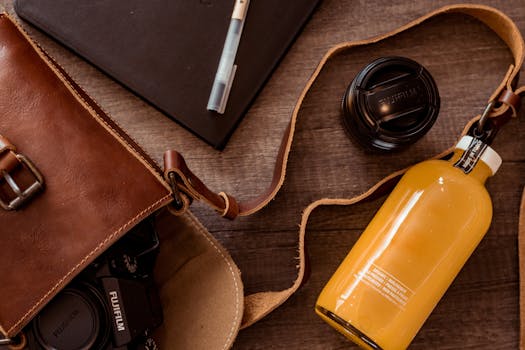How to Build Your Photography Portfolio
Building a photography portfolio is an essential step for both aspiring and professional photographers. A well-crafted portfolio showcases your skills, creativity, and unique style, serving as your visual resume to potential clients or employers. It’s more than just a collection of photos; it’s a carefully curated narrative that highlights your best work and tells a story about who you are as a photographer.

Creating a standout portfolio involves more than simply selecting your favorite images. You need to consider the overall presentation, the coherence of your work, and how each piece fits into the broader theme. This process requires critical thinking, artistic vision, and an understanding of what potential clients are looking for. As someone with over 15 years of experience in portrait and landscape photography, I've learned that a strong portfolio can open doors to new opportunities and collaborations.
In this article, we'll explore practical steps to build an impressive photography portfolio. From selecting the right images to using effective editing tools, these tips will help you craft a portfolio that truly represents your talent and vision.
Selecting Your Best Work
Choosing the right images is the most crucial part of building your portfolio. Start by gathering all your work and then narrow it down to your best pieces. Look for images that not only demonstrate technical proficiency but also tell a story or evoke emotion.
- Focus on Quality Over Quantity: It's better to have fewer high-quality images than a large number of mediocre ones.
- Showcase Your Range: Include various styles and subjects to show versatility without losing coherence.
- Avoid Redundancy: Make sure each image adds something unique to the portfolio.
For instance, when I was preparing my portfolio for National Geographic, I selected images that highlighted my ability to capture landscapes in different lighting conditions, demonstrating both technical skill and creative vision.
Editing Your Photos
Editing is where you can enhance your images to make them stand out. Using tools like Adobe Lightroom and Photoshop can help you refine your photos without over-editing them. The key is to enhance the natural beauty of the image while maintaining its authenticity.
- Consistency in Style: Ensure that the editing style is consistent across all photos for a cohesive look.
- Subtle Enhancements: Focus on minor adjustments like exposure, contrast, and color balance rather than heavy filters.
- Attention to Detail: Zoom in to check for any imperfections that need correction.
I often spend hours fine-tuning each photo to ensure it meets the high standards expected by publications like Vogue. Consistency and attention to detail are crucial in making a polished portfolio.
Organizing Your Portfolio
The way you organize your portfolio can significantly impact its effectiveness. A well-structured portfolio guides the viewer through your work seamlessly, making it easy for them to appreciate each piece.
- Create Categories: Group similar types of photos together (e.g., portraits, landscapes) for easy navigation.
- Tell a Story: Arrange images in a way that tells a coherent story or highlights your creative journey.
- Include Descriptions: Add brief descriptions or captions to provide context or explain the significance of each photo.
When presenting my work at photography exhibitions, I always ensure that my portfolio is logically organized, making it easier for viewers to follow my creative narrative.
Presenting Your Portfolio
The presentation of your portfolio can be either digital or physical, depending on your audience and purpose. Each format has its advantages and should be chosen based on where it will have the most impact.
| Format | Advantages | Disadvantages |
|---|---|---|
| Digital Portfolio | Easy to share; Can reach a global audience; Interactive elements possible | Requires technical skills; Can be impersonal |
| Physical Portfolio | Tangible experience; Personal touch; High-quality print details | Costly; Limited reach; Not easily updated |
I often use both formats depending on the situation. For online submissions or social media sharing, a digital portfolio works best. However, for face-to-face meetings or gallery exhibits, a physical portfolio adds a personal touch that digital cannot match.
Updating Your Portfolio Regularly
Your portfolio should be a living document that evolves with your career. Regularly update it with new work to keep it fresh and relevant. This not only shows growth but also keeps potential clients engaged with your latest projects.
- Review Periodically: Set aside time every few months to review and update your portfolio.
- Add New Work: Include recent projects that showcase new skills or achievements.
- Remove Outdated Images: Replace older works with newer ones that better represent your current abilities.
I make it a habit to update my portfolio after completing significant projects or receiving notable accolades. This ensures that my portfolio always reflects my most recent work and capabilities.
A strong photography portfolio is more than just a collection of images; it's a reflection of your artistic journey and professional growth. By carefully selecting and editing your best work, organizing it thoughtfully, presenting it effectively, and updating it regularly, you can create a compelling portfolio that opens doors to new opportunities.
Remember that building a great portfolio takes time and effort. Stay committed to showcasing your unique vision and continuously strive for excellence in every shot you include. This dedication will not only help you stand out but also connect with potential clients who appreciate the depth and quality of your work.